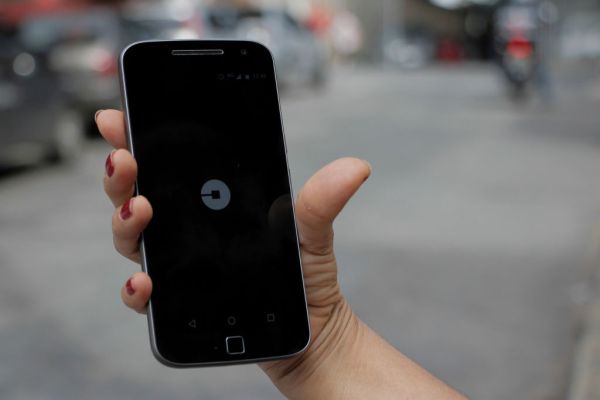Uber is starting to roll out a new in-app chat feature globally today, which will allow riders to send text messages directly to their driver once they book a ride, and vice versa. The new feature replaces the somewhat clunky mechanism of SMS for text communication between rider and driver, helping to preserve privacy for both sides in all markets, and cutting down on potential confusion.
Now, when you book a ride, a chat option appears that lets you message your driver directly. It’ll show your driver’s name, vehicle type and plate number at the top of the messaging window, and you can see read/received receipts for messages sent. On the driver side, received messages will be read aloud to help minimize distraction, and drivers can acknowledge a message with one tap to send a ‘thumbs up’ emoji response. Drivers can also initiate chat, but the Uber driver app cautions directly in the messaging window that drivers should only do so when stopped and not actually driving.
The in-app messaging feature arose because the SMS method had a number of areas where it was lacking from a user experience perspective, according to Uber Product Manager Jeremy Lermitte. He explained in an interview that in some markets, there is cost sensitivity associated with using limited SMS plans for getting in touch (and in some cases, drivers don’t have voice plans on their devices at all for calls), and that’s just one among many reasons to bring messaging in-app.
“In many of our markets, SMS isn’t actually available for us, we don’t have the technology in place,” Lermitte said. “That’s especially true in some of our key markets like Brazil and India. And then in other emerging markets where we do offer SMS, we don’t have the technology in place to anonymize the personal contact info, so the rider and driver are actually sharing their personal contact information in some of those markets.”
[gallery ids="1525526,1525527"]
Besides cost, availability and privacy, Lermitte says Uber also heard that people wanted more visibility into whether or not their messages were actually being received and read by either party. That’s something they could easily offer in-app, to add clarity to the flow of text communication and reassure both parties involved.
“Riders and drivers wanted to understand the status of their message,” he said. “Did my driver read my message? Did the rider receive my message? Now we’re giving that delivered and read status which isn’t always available today with SMS technology.”
Built-in SMS also means that travellers won’t be left unable to communicate with their driver when they don’t have an international plan for roaming. Provided they can connect to a Wi-Fi hotspot, which is pretty much always the case at airports and other travel hubs, they’ll now be able to communicate with their driver.
“The riders really just wanted a consistent experience,” Lermitte noted. “Lots of stories with folks travelling internationally where, let’s say you land in Paris, and you’re in the airport, you don’t have a voice plan or a cellular plan setup, you can now just connect to Wi-Fi and communicate with your driver for the pickup.”
The built-in messaging feature makes a lot of sense when you think about it, and Lermitte says that it’s something Uber can offer without requiring significant ongoing overhead to maintain. He also says that Uber is still putting resources behind building out this new feature, which could expand in the future to cover more areas. While message threads disappear and communication is closed at the end of a ride now, for instance, they’ve heard some feedback that this might be a good way to check for lost items in future. Also, the team has definitely considered VoIP audio calls as another potential candidate for in-app inclusion, and will continue to explore that.
Messaging can also be leveraged for Uber’s other businesses, including UberEATS, and makes a lot of sense there, too, as a future consideration, the company says. In-app communication could be a vector for all kinds of potential business extensions for Uber, too, including connecting riders mid-ride with other businesses and promotions. Regardless, it’s a smart flag to plant, and a great new convenience feature, too.
